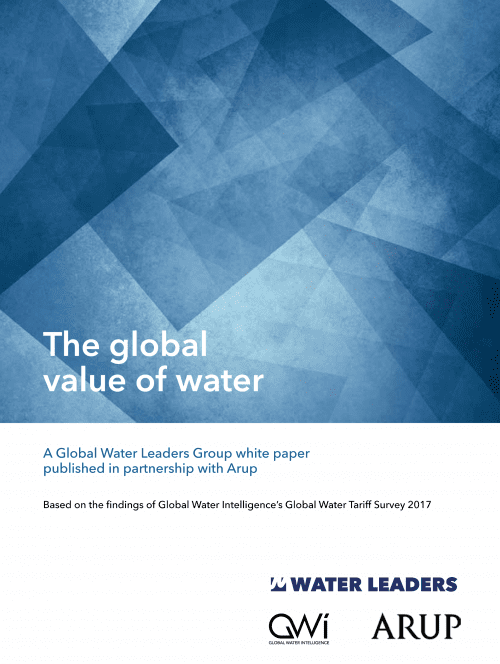“Tariffs Need to Double” in the USA to Tackle Ageing Infrastructure & Water Scarcity

A new White Paper, published by Global Water Intelligence (GWI) and the Global Water Leaders Group (GWLG) calls for further water and wastewater tariff increases across the USA, amid rate hikes driven by concerns for ageing infrastructure and water scarcity.
The White Paper, entitled The Global Value of Water and published last month in partnership with Arup, includes results of The Global Water Tariff Survey 2017, with tariff data from 452 cities across the world, and commentaries from GWLG members and Alexander Danilenko, Senior Water and Sanitation Specialist at The World Bank.
The survey results revealed that water and wastewater tariffs in cities across the US grew by 5.3% between July 2016 and July 2017, as rising operating costs, ageing infrastructure replacements and water scarcity took their toll.
The survey found for the first time, that urban residents in the US pay more on average for their combined water and wastewater services than city-dwellers in Western Europe. A constant compound annual growth rate of 5% for the last 5 years in the US has taken rates to $4.09/m3, more than 20 cents above Western European rates.
Several US cities topped the 2017 tariff survey results. Portland, Oregon for example was found to have the highest combined tariff out of the 452 surveyed cities ($8.00/m3), while Honolulu, Hawaii, (the city with the highest tariffs in the 2016 survey), settled at 3rd place this year with a combined tariff of $7.93/m3.
The White Paper authors found that for many utilities, tariff hikes are essential to cover the cost of upgrades and repairs of ageing infrastructure, and reduce critical failures in U.S. municipal water systems
“The truth is, that if the water systems of our major cities are to be resilient and sustainable, US water tariffs probably need to double” Howard Neukrug, Senior Advisor to the GWLG and co-author of The Global Value of Water commented. “We have the global water technology to create smart water systems that can use artificial intelligence to design newer, more resilient and cost-effective solutions to our urban water problems. Reinvesting in our water systems just takes sound planning, engineering and money.”
Cities like Pittsburgh, Denver, Los Angeles and Indianapolis for example, experienced increases in their combined tariffs by 21%, 11%, 18% and 13% respectively in 2017, to fund the repairs and replacement for ageing infrastructure.
In the case of Pittsburgh, Pittsburgh Water & Sewer Authority (PWSA) plans to use the increased tariff revenue to fund the replacement of ageing pipes dating back to the pre-Civil War period, and to upgrade outdated computer systems which have resulted in PWSA being unable to issue bills to certain areas.
The White Paper also revealed that in the US cities most affected by water scarcity, tariff hikes are being implemented as a strategy to encourage water conservation, and provide funding for innovative new water diversification strategies.
Residents across the state of Texas for example, saw rate hikes again this year as water security concerns continue to inspire conservation-driven pricing. The most noticeable increases were in El Paso and San Antonio, which saw combined water and wastewater rate increases of 8.28% and 3.84% respectively.
In El Paso, the higher bills are meant to help fund projects to extend the pipeline network to new areas, build new reservoirs and pump stations, and drill more wells as the city prepares for a population surge of 40% by 2040. The revenue from tariffs will also fund part of El Paso Water’s (EPWater) budget set aside to acquire additional land and water rights for water imports to help combat future droughts.
The Los Angeles Department of Water and Power (LADWP) also has plans to increase water conservation through rate hikes. The city’s tariff structure was changed in 2016 from two blocks to four blocks, with high water customers being charged more.
At the other end of the scale, the survey revealed that residents in states such as Florida, Tennessee, Montana, and Illinois, enjoy the cheapest combined water and wastewater bills in the region, with rates ranging from $1.28 in Memphis (Tennessee), to $2.39/m3 in Salt Lake City (Utah).
The Global Value of Water and The Global Water Tariff Survey are available as part of a subscription to GWI Magazine, visit www.globalwaterintel.com/gwi/tariffsurvey


